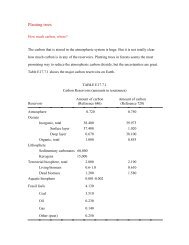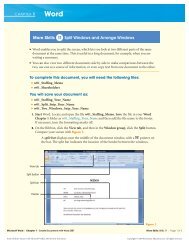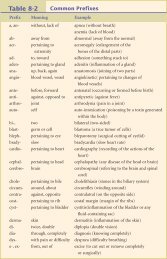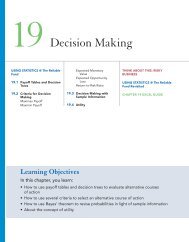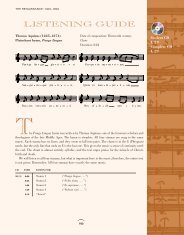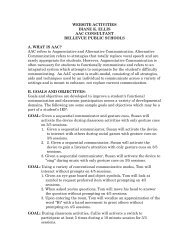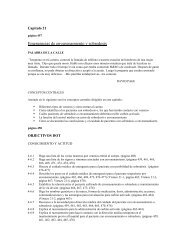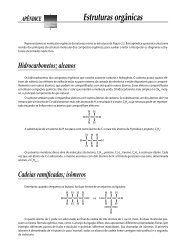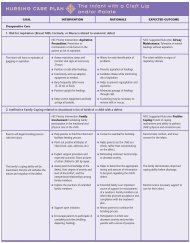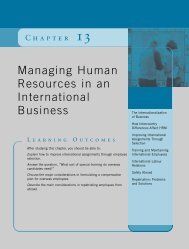chapter
chapter
chapter
Create successful ePaper yourself
Turn your PDF publications into a flip-book with our unique Google optimized e-Paper software.
216 Unit Three Forces Within<br />
China<br />
Japan<br />
Japan trench<br />
Key<br />
Shallow<br />
Intermediate<br />
Deep<br />
Marginal sea<br />
Partial melting<br />
Wadati-Benioff zone<br />
Volcanic island arc Trench<br />
Subducting oceanic lithosphere<br />
Asthenosphere<br />
Oceanic<br />
crust<br />
Figure 7.22 Distribution of earthquake foci in the vicinity of the Japan trench. Note that intermediate- and deep-focus earthquakes<br />
occur only within the sinking slab of oceanic lithosphere. (Data from NOAA)<br />
into ocean-floor sediment. From 1968 until 1983, the<br />
source of these important data was the Deep Sea<br />
Drilling Project, an international program sponsored by<br />
several major oceanographic institutions and the National<br />
Science Foundation. A new drilling ship was<br />
built. The Glomar Challenger represented a significant<br />
technological breakthrough, because this ship could<br />
lower drill pipe thousands of meters to the ocean floor<br />
and then drill hundreds of meters into the sediments<br />
and underlying basaltic crust.<br />
Operations began in August 1968, in the South Atlantic.<br />
At several sites, holes were drilled through the<br />
entire thickness of sediments to the basaltic rock below.<br />
An important objective was to gather samples of sediment<br />
from just above the igneous crust as a means of<br />
dating the seafloor at each site. (Radiometric dates of<br />
the ocean crust itself are unreliable because seawater<br />
alters basalt.)<br />
When the oldest sediment from each drill site was<br />
plotted against its distance from the ridge crest, it was<br />
revealed that the age of the sediment increased with increasing<br />
distance from the ridge. This finding agreed<br />
with the seafloor-spreading hypothesis, which predicted<br />
that the youngest oceanic crust would be found at<br />
the ridge crest and that the oldest oceanic crust would<br />
be at the continental margins.<br />
The data from the Deep Sea Drilling Project also reinforced<br />
the idea that the ocean basins are geologically<br />
youthful, because no sediment with an age in excess of<br />
180 million years was found. By comparison, some continental<br />
crust has been dated at 3.9 billion years.<br />
During its 15 years of operation, the Glomar Challenger<br />
drilled 1092 holes and obtained more than 96 kilo-<br />
100 km<br />
200 km<br />
300 km<br />
meters (60 miles) of invaluable core samples. The Ocean<br />
Drilling Program has succeeded the Deep Sea Drilling<br />
Project and, like its predecessor, is a major international<br />
program. A more technologically advanced drilling<br />
ship, the JOIDES Resolution, now continues the work of<br />
the Glomar Challenger (Figure 7.23).<br />
Evidence: Hot Spots<br />
Mapping of seafloor volcanoes (called seamounts) in<br />
the Pacific revealed a chain of volcanic structures extending<br />
from the Hawaiian Islands to Midway Island<br />
and then continuing northward toward the Aleutian<br />
trench (Figure 7.24). Radiometric dates of volcanoes in<br />
this chain showed that the volcanoes increase in age<br />
with increasing distance from Hawaii. Suiko Seamount,<br />
which is located near the Aleutian trench, is 65 million<br />
years old, Midway Island is 27 million years old, and<br />
the island of Hawaii was built up from the seafloor less<br />
than a million years ago (Figure 7.24).<br />
Researchers are in agreement that a rising plume of<br />
mantle material is located below the island of Hawaii.<br />
Decompression melting of this hot rock as it enters the<br />
low-pressure environment near the surface generates a<br />
volcanic area, or hot spot. As the Pacific plate moved<br />
over the hot spot, successive volcanic mountains have<br />
been built. The age of each volcano indicates the time<br />
when it was situated over the relatively stationary mantle<br />
plume.<br />
This pattern is shown in Figure 7.24. Kauai is the<br />
oldest of the large islands in the Hawaiian chain. Five<br />
million years ago, when it was positioned over the hot<br />
spot, Kauai was the only Hawaiian island in existence




